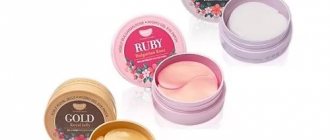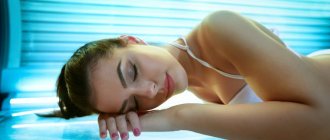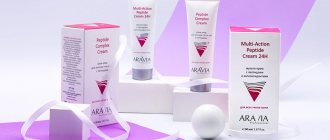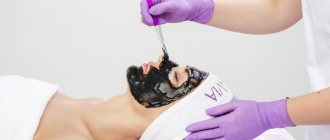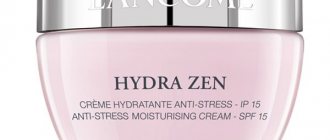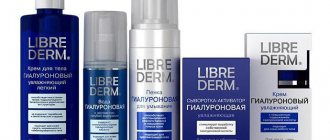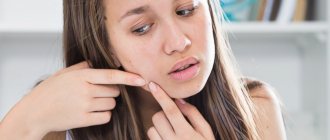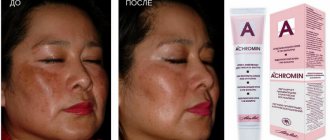In stores you can find cosmetics with various sun protection factors - from SPF 4 to SPF 50.
Therefore, modern women are often concerned with questions: what is SPF, what protection factor should a product have, how to choose and use sunscreen correctly?
- The benefits and harms of the sun and tanning
- Sun protection
- Skin phototypes according to Fitzpatrick
- What is SPF
- Degree of protection
- My favorite sunscreen 2020
- How to choose sunscreen
- Ultraviolet Index (UVI)
- My recommendations for residents of Russia and Ukraine
- Mistakes of using sunscreen with SPF
- Chemical peels, acids, retinol
- SPF, makeup and questions answered
The benefits and harms of tanning
Just a hundred years ago, in high society there was a cult of snow-white skin, and even men wore wide-brimmed hats, and ladies used hats, gloves and sun umbrellas - just to protect their skin from tanning.
But in the 20s of the last century, Coco Chanel introduced a fashion for tanning, and the situation changed dramatically. It has become popular to relax on the seaside, and tanning has become a symbol of a beautiful life.
However, over time, doctors sounded the alarm. It turned out that excessive tanning is not very good for health - the number of skin cancer cases has increased, and in addition, it has been proven that sun rays cause photoaging and can accelerate the natural aging of the skin.
The general craze for tanning has been replaced by the widespread use of sunscreens with a super high degree of protection SPF 100, as well as a new mental disorder - heliophobia - an obsessive fear and fear of being in the sun.
But despite this, the situation with health and photoaging has not improved, but, on the contrary, has worsened. And some experts believe that the reason for this is the widespread use of sunscreens. Or rather, their incorrect use.
Benefits of the sun
We need a moderate amount of sunlight for our health, for the beauty of our skin, and for a good mood.
- When exposed to sunlight, our body produces vitamin D, which is necessary for bone formation.
- With a lack of ultraviolet radiation, collagen synthesis decreases, which leads to sagging skin and the appearance of wrinkles.
- The sun's rays promote the production of happiness hormones, improve mood and strengthen the immune system.
In other words, it is not ultraviolet radiation itself that is harmful, but its excess.
UVA and UVB
There are several types of solar radiation - UVC, UVB and UVA:
- UVC rays are deadly to humans, which are scattered in the ozone layer of our atmosphere without harming all life on Earth.
- UVB is short-wave radiation that penetrates only the top layer of skin (epidermis), but it is this type of ray that causes sunburn and is a common cause of cancer.
- UVA is long-wave radiation that surrounds us and permeates everything from the moment the sun rises until sunset. These rays affect the body even when we are indoors and penetrate deeper than the epidermis into the dermis. Does not cause burns, but promotes tanning, pigmentation, photoaging of the skin and the appearance of wrinkles. Research is underway to identify the involvement of UVA rays in the formation of skin cancer.
Sun protection
How to protect yourself from excessive exposure to sunlight? First of all, you need to limit your time in the sun and not sunbathe between 10 a.m. and 4 p.m.
Nature has given us a great built-in mechanism for limiting sun exposure. If you overdo it, an ordinary white person becomes red as a lobster, and in the worst case, even covered in blisters.
But when we use sunscreen, we lose this natural control and our alertness decreases accordingly. Filters that protect us from spectrum B rays prevent us from getting too burned. Therefore, a modern person often lies on the beach for 2-3 hours in the heat of the day and does not get blisters, which is naturally incredibly happy!
And, of course, there is nothing to be happy about. No sunscreen provides 100% protection from excessive sun exposure. In other words, a cream with SPF is not designed to make us lie on the beaches longer, but to enhance protection during forced long periods of exposure to the sun.
Is Sunscreen necessary when there is no sun?
Sunshine and vitamin D are vital to our health and well-being. They activate the immune system and regulate almost all metabolic processes of the body. But too much sun can cause early aging and increase the risk of skin cancer. This has been proven by numerous scientists.
“Daily use of sunscreen SPF 15 or higher reduces the risk of developing melanoma by 50%,” a 2022 study from the New York Skin Cancer Foundation.
The main danger is that the enemy of youth and health of our skin is often invisible. On cloudy and cold days, ultraviolet radiation is released, which penetrates even through clouds, window and car glass. Remember, the sun shines even when it’s not warm. And if the sun is shining, we apply sunscreen. Always.
“Even in cloudy weather, your skin absorbs up to 80% of the sun's rays. And snow and ice double this radiation. This means that every day of the year, regardless of the weather, even if you are outside for 10 minutes, you need to apply SPF,” dermatologist Kathy Manno, MD, Reno Skin Cancer and Dermatology Institute.
We always apply Sanskrin if we go outside during the day.
Skin phototypes according to Fitzpatrick
There is such a thing as a minimum erythemal dose - this is the dose of solar radiation that causes minimal visible redness of the skin. This dose is individual and depends on the phototype.
All people are divided into 6 phototypes depending on skin color:
- Celtic type - never tan, always burn - fair skin, often with freckles, red or blonde, light eyes.
- European Nordic type - sometimes tan, but more often get sunburned - fair-skinned, light brown hair, sometimes dark brown, light eyes.
- Central European type - tan well, sometimes burn - brown or light eyes, dark brown or brown hair and ivory skin without freckles.
- Mediterranean type - tan well, never burn, dark eyes, dark hair and dark skin without freckles.
- Indonesian or Oriental type - always tan, never burn - dark skin, dark hair and eyes.
- African - never burns - very dark skin, black hair and eyes.
Types of UF protection
Different sunscreens have different properties. It is thanks to these qualities that they are divided into the following types.
SPF factors with physical impact
The cosmetics contain titanium oxide and zinc dioxide, which reflect sun particles. They act as a kind of screen that prevents rays from penetrating the skin.
Cosmetics with this factor have a low level of protection, almost never cause allergic reactions, but are not waterproof.
SPF factors with chemical effects
These are products containing components that block rays by reacting with them.
Creams and other products with this action factor are highly effective because they contain a high degree of SPF. But they have a significant drawback - frequent allergic reactions to the components.
Natural SPF filters
These are components of plant origin that are used to make children's cosmetics.
These factors act only as an addition to factors with physical or chemical effects. They can improve the actions of other components.
What is SPF
SPF is the Sun Protection Factor (SPF), which measures how long you can sit in the sun before getting sunburned. Or, to be more precise, how many times does the minimum erythemal dose increase when using a given sunscreen.
For example, if without sunscreen your skin usually turns red after 5 minutes at the beach, then using a product with SPF 10 can prevent you from getting sunburned for up to 50 minutes.
Of course, these numbers are very arbitrary and give only a rough idea of how protected you are from spectrum B rays, which cause erythema (redness of the skin) and sunburn.
However, SPF does not indicate how protected you are from spectrum A rays. These rays are more insidious - they do not cause redness or any discomfort, but penetrate deep into the skin and contribute to photoaging.
And although many modern sunscreens contain both physical and chemical filters that protect against both Spectrum A and Spectrum B rays, it is still not known for certain whether photoaging can be completely prevented with the help of sunscreens.
So the most reliable protection against excessive exposure to sunlight to this day is to limit exposure to the sun!
Degree of protection
What degree of protection do products with SPF provide? Conventionally, sunscreens are divided into the following groups:
- SPF 2-4 – basic protection, protects from 50-75% UV
- SPF 4-10 – medium level of protection, protects from 85% UV
- SPF 10-20 – high degree of protection, protects against 95% UV
- SPF 20-30 - intense protection, protects against 97% UV
- SPF 50 – sanitary block, protects from 99.5% UV
That is, the difference between a cream with SPF 30 and SPF 50 is very insignificant. And products with SPF above 50 today no longer meet modern standards.
Composition of sunscreen
Modern sunscreens usually contain both physical and chemical filters.
Physical filters create a screen and thus reflect the sun's rays of spectrum B. In sunscreen formulations you can find filters such as:
- Titanium dioxide
- Zinc oxide
Chemical filters adsorb ultraviolet rays. These include:
- Tinosorb S (Bis-Ethylhexyloxyphenol Methoxyphenyl Triazine)
- Avobenzone (butyl methoxydibenzoylmethane)
- Benzophenone and others
The dangers of sunscreens
As you probably already guessed, there are different degrees of protection for a reason and you need to choose products not with the maximum, but with the optimal SPF. Optimal for you.
Because sunscreen filters in large quantities can themselves have harmful effects on the skin.
For example, chemical filters can cause allergic reactions, and physical filters can provoke an exacerbation of acne.
How does SPF protection work and what does the SPF index mean?
SPF (Sun Protection Factor) is the degree of skin protection from the sun.
The main confusing thing about SPF is the number that follows it. This is an index that tells you how much UV radiation the sunscreen can filter out.
All the sun's rays that hit the skin are 100%. Divide 100% by the SPF index. For example, SPF 30.
100: 30 = 3.3%. Only this 3.3% of solar radiation will reach your skin, the remaining 96.7% will be blocked.
- SPF 15 - 93% of the sun's UV rays
- SPF 30 - 97% of the sun's UV rays
- SPF 50 - 98% of the sun's UV rays
My Favorite Sunscreen 2022
Last spring I first tried the new VITABRID cream - C12 ALL-DAY UV Defense SPF 50+, and have been using it for a whole year.
The cream contains ONLY physical filters, which completely eliminates harmful effects on the body. Protects against spectrum A and B rays. Maximum protection level: 50+ and PA++++.
In addition, the cream contains stabilized vitamin C and provides antioxidant protection.
For readers of my blog there is a 10% discount on orders of all Vitabrid products.
What sun filters to look for in foundations
When choosing a foundation, you need to pay attention to the following elements in its composition:
- Sun filters. They are of chemical or physical type. The former react with ultraviolet rays, neutralizing their negative effects. The second ones reflect the sun's rays, preventing them from penetrating deep into the epidermis. A high protection factor is guaranteed by cosmetics that contain both physical and chemical elements. It should be remembered that chemicals can cause allergic reactions.
- Antioxidants are also an important component of cosmetics, especially for the face. These are mainly plant extracts, essential oils, vitamin complexes and microelements that maintain skin firmness and elasticity, preventing premature aging.
- Any skin, especially in summer, needs regular moisturizing. Therefore, the composition of the foundation should include elements that maintain the water balance of cells, preventing them from dying off under the influence of heat.
How to choose sunscreen
How to choose the sunscreen that's right for you? To do this, you need to take into account several factors:
- Your age
- Lifestyle
- Skin condition
- Ultraviolet index in your region
As you probably already guessed, it is almost impossible to give universal advice for everyone.
Since I live and work in Kyiv, I am primarily interested in the situation in Ukraine. Therefore, I will give recommendations that are suitable primarily for residents of Kiev and residents of most other cities of Ukraine, as well as residents of countries with a similar climate - for example, Russia and Belarus, where the situation with the ozone layer and ultraviolet index is approximately the same.
Well, if you live in America, Australia, Thailand, Israel or Spain, you better consult with local specialists or study the situation in your region yourself.
Ultraviolet Index (UVI / UV Index)
Ukrainians are lucky - in our country the situation with the ozone layer is better than in many other countries and the ultraviolet index is not very high. In the autumn-winter period, when we wear hats, UGG boots and gloves for six months and only our faces are exposed, using sunscreen with a high SPF is not only impractical, but also harmful.
Because in this case, you will experience a lack of ultraviolet radiation and get the very problems you hope to protect yourself from - decreased synthesis of collagen, vitamin D and, as a result, skin aging, brittle bones and bad mood.
To determine the ultraviolet index, and accordingly the required degree of protection in your region, you can use the convenient website nesgori.ru.
For example, today, the ozone layer in Kyiv is good, and the ultraviolet index is low - 3. And these readings are expected at midday. On a day like this, do I need intensive protection in the morning on my way to work? Like a hare, you need a fifth leg.
But if we check Sydney, for example, we will see that the situation there is completely different - the ozone layer is thinner and the ultraviolet index is higher. In general, if you suddenly live in Australia, now you should use high-protection products every day, and in addition, it is better to stay indoors during the midday hours.
ps If you use a smartphone, then your weather application probably displays up-to-date information about the current UV index. In the iPhone app it looks like this:
Age
In addition to place of residence, age is of no small importance - young and mature skin up to 30-35 years of age is protected from the sun much better than at an older age. So with age, protection needs to be strengthened.
Lifestyle
And of course, you need to take into account your lifestyle. It’s one thing if you’re an office worker and spend all day indoors, and another thing if you’re a young mother and walk with a stroller all day.
Who is SPF 20 cosmetics suitable for?
Professional cosmetics SPF 20 allows you to prevent the dangerous consequences of thoughtless and excessive tanning, protect the epidermis from inflammation, burns, drying out and early photoaging. SPF20 creams are basic products for darker-skinned people with 3-4 skin phototypes - filters of this intensity reliably protect the prepared skin from scorching ultraviolet radiation and allow you to enjoy sunbathing almost endlessly (the main thing is not to forget to renew the protective layer of cosmetics on time!).
SPF 20 - for dark-skinned people and for already slightly tanned skin
However, many ultraviolet-sensitive carriers of phototypes 1-2 will also benefit from SPF20 creams - if the resulting base tan is already quite noticeable and the sun's rays are not so intense, such protection will be quite enough to avoid burns and photoaging.
My recommendations for residents of Russia and Ukraine
During the spring-summer period, for office workers with healthy skin, on a weekday I recommend using their usual products with a medium or high degree of protection, that is, with SPF from 4 to 15 - this is quite enough.
But if on a weekend you go on a picnic, to the beach, or even just for a walk around the city, I recommend using intensive protection products, that is, with SPF 25–30.
But for people who, for whatever reason, are completely contraindicated in the sun, intensive protection is constantly needed in the summer, and for such clients I recommend using products with SPF 25-30 daily.
For example, those who undergo aggressive cosmetic procedures, people with hyperpigmentation, vitiligo, those who take medications that increase sensitivity to the sun - antibiotics, diuretics, hormonal drugs.
Contraindications to the use of SPF products
There are few restrictions, but they exist. These include:
- allergic reactions;
- skin diseases;
- wounds, ulcers, deep scratches;
- individual intolerance to one or more components;
- During pregnancy, products containing chemical sunscreen filters should be avoided.
Products should only be stored in a cool, dry place, without exposing them to high temperatures, otherwise the texture will separate and the protective properties will completely disappear or will no longer correspond to the mark on the package.
Mistakes of using sunscreen with SPF
You are probably all familiar with the situation: a beach, a person sits on a sun lounger and begins to apply sunscreen. And then the tube of cream sits for a couple of hours under the scorching sun on the table next to the sun lounger. It wouldn't be surprising if such a person ended up getting pretty badly burned.
- Sunscreen should be applied at least 20 minutes before going out into the sun, that is, while at home or in a hotel room. Otherwise, you will have time to get burned before the chemical filters take effect.
- Sunscreen should be reapplied after every swim or every 2 hours in the sun. Otherwise, sunscreen filters will lose their effectiveness and do more harm than good.
- The sunscreen should not be in direct sunlight - at the beach, put the tube of cream in your bag, otherwise the filters will very quickly lose their effectiveness.
Why is Sanskrin an investment in youth and health?
Unfortunately, for many of us, sunscreen remains an exclusive attribute of trips to the sea. Where, even under the scorching sun, panthenol lovers and those who “never burn out” forget about it. We hope you understand why you don’t need to do this. After all, Sanskrin protects us from sunburn, wrinkles, pigmentation and cancer. Helps keep the skin moisturized and elastic, and also preserves its youth.
Daily sun protection is an investment in your health and beauty, an investment that will definitely pay off.
Layer-by-layer application of cosmetics with SPF
In what order should you apply SPF cream, moisturizer and makeup to your face?
How to do all this correctly? The rule here is simple. It is advisable that the SPF cream be on top. For example, if you use a moisturizer and you have a cream with SPF, then apply the moisturizer to your face first, and then apply your SPF cream on top.
If you do not go outside without makeup, then it is wiser to purchase your foundation with an SPF factor. In this case, you first apply moisturizer to the skin, and then apply your foundation or bb cream or cc cream with SPF factor on top. After this, you can also powder yourself with powder with SPF.
But following the “SPF on top” rule is not always possible. Because it happens that your favorite foundation does not contain an SPF factor or contains a very low SPF factor.
In this case, you apply SPF cream under your foundation. But you need to keep in mind that in this case the level of protection is slightly reduced, because you are diluting the SPF cream with the product that you apply on top.
Duration of SPF protection
Not all SPF factors work the same. Some have more powerful protection, others are less effective. Distinguishing one factor from another is quite simple. You need to look at the numbers next to the letters SPF.
They can range from 2 to 50. The lower the number, the lower the level of protection.
| SPF factor | Skin protection, % | Protection level |
| 8 | 83,3 | basic |
| 10 | 90 | basic |
| 15 | 93,3 | average |
| 20 | 95 | average |
| 25 | 96 | average |
| 30 | 96,7 | high |
| 45 | 97 | high |
| 50 | 98 | high |
| 50+ | 98 | high |
When buying a product with a UV filter, you must know the duration of its action. To do this, you need to determine how long it takes for your skin to turn red. This can be done empirically by observing your skin.
On average it is 15 minutes. Now the resulting value must be multiplied by the degree of SPF factor.
For example : 15 minutes*SPF25=375 minutes=6 hours of relatively safe sun exposure
Makeup and how often to reapply sunscreen
One of the common questions is what to do with makeup if the cream with chemical filters needs to be renewed every 2 hours? Should I apply SPF cream over foundation or remove all makeup and reapply the cream to a cleansed face?
Chemical filters actually oxidize when exposed to ultraviolet rays and turn into free radicals, which cause even more damage to the skin than ultraviolet radiation.
But they oxidize not every 2 hours, but every 2 hours of exposure to the sun . And accordingly, sunscreen needs to be renewed not every 2 hours, but every 2 hours of exposure to the sun. It doesn’t matter whether it’s 2 hours in a row or the total for the day.
For example, if you walked to work in half an hour in the morning, went to a cafe for 15 minutes at lunch, and walked for half an hour in the evening and returned home, then you do not need to renew your sunscreen. Because you spent a total of less than 2 hours in the sun.
But if, for example, you are walking on an excursion, somewhere near the pyramids in Egypt under the scorching sun for 2 hours, then in this case it is really better to completely wash off the cream, cleanse your face and reapply sunscreen. And if necessary, reapply makeup.
What is PA
PA is a rating used by sunscreen manufacturers in Korea and Japan to indicate protection against UVA rays. PA+ means minimal protection, PA++ means moderate, PA+++ means strong.
Product examples
Korean sunscreen SPF-50 / PA+++ with aloe for face and body Farm Stay
Sunscreen with light texture and high protection spectrum - SPF-50 / PA+++. Aloe vera softens and nourishes the skin, preventing redness after sunbathing.
More details about the product
Korean sunscreen SPF-50 / PA+++ with snail extract Farm Stay
Effectively protects against long UVA rays, prevents photoaging, sun allergies and redness. Snail extract heals skin injuries, vitamin E nourishes and has a rejuvenating effect.
More details about the product
How do I protect myself from the sun?
On a normal workday, I use a regular day cream with medium protection because I spend almost all day indoors. Another thing is a day off or a trip to the sea.
I love the sun, I love a light tan, but I strictly limit my time in the sun - I’m on the beach for no more than 30-60 minutes, always with high SPF sunscreen and, if possible, I try to spend most of my time in the shade or under an umbrella, especially at sea .
You will never see me on the beach between 10 am and 4 pm.
SPF creams perform important functions:
- protect against burns without interfering with the appearance of a tan;
- prevent the appearance of pigmentation, spider veins, and malignant neoplasms;
- moisturize and nourish the skin, saturate it with vitamins, give elasticity;
- preserve youth, freshness and beauty of the skin;
- restore and renew the skin.
ATTENTION! Clothing guarantees the prevention of burns, but not photoaging. It is better to cover even a body covered with a cloth with a layer of sunscreen.
Answers on questions
Cream with SPF and vitamin D
If we use cream with SPF, then how does the vitamin D that we need so much get into our body?
Vitamin D does not enter, but is synthesized in our body under the influence of ultraviolet rays. But no cream with SPF provides 100% protection from the sun, and in addition, in the summer our arms and legs are left exposed.
This way, you will still receive the necessary dose of ultraviolet radiation for the synthesis of vitamin D. To do this, it is not at all necessary to lie on the beach for hours, but rather a walk in the park or on the way to work.
Using products with different SPFs at the same time
And if you apply cream with SPF 30 and powder or foundation 15 on top, what kind of protection will there be?
SPF is never cumulative. In the best case, a product with SPF with higher protection will work. But there are times when the product can reduce protection.
For example, if a girl applied cream with SPF 20, and then applied foundation with SPF 10 on top, then it is quite possible that it will slightly dilute the previous cream and the protection will no longer be 20, but slightly lower, for example 15.
How to renew SPF cream in extreme conditions
How to renew cream with SPF while traveling in the desert or in the mountains when there is no access to a washbasin? Or maybe it’s better without cream at all?
If you were not born and raised in the jungle, then you still better use sunscreen. And updating it is quite simple. You probably have a bottle of drinking water with you and you can simply wash your face, pat your face dry and apply a new portion of cream.
And if there is not even water, then you can take wet wipes with you and wipe your face with wet wipes, remove the cream that you applied a few hours ago and apply a new portion of cream.
Sun protection without SPF
In everyday life, we apply a fair amount of decorative cosmetics to our skin; they do not always contain SPF, but the question is: don’t the layers of cosmetics themselves create mechanical protection from the sun on the surface of the skin?
It’s absolutely true that any high-quality cream has a base that in itself protects our skin from the harmful effects of the environment, including the sun.
This is why young skin, which still produces enough of our own cream, is better protected from the sun than mature skin after 35-40 years.
How much cream to apply to face and neck
Many sources recommend applying 1/4 teaspoon of sunscreen to your face and the same amount to your neck. But what if it’s foundation with SPF or powder, because that amount will be too much?
You need to understand that these recommendations apply primarily to long stays in the active sun - when you are on the beach, on a boat trip or on an excursion in hot countries. Because when you swim, wipe off sweat, or lie on a towel, you lose some of the protection.
In this case, in order to provide the skin of the face, neck and décolleté, and the whole body, with reliable protection, you need to use a cream with a high SPF and you really need to apply it to the skin in large quantities without saving.
And it shouldn’t be a foundation, it should be a regular sunscreen. But if we are talking about everyday life, then most people go to work in the morning, return in the evening, during the day they go out for a maximum of 10-20 minutes in a cafe for lunch, that is, they practically never spend time in the active sun.
Plus, don’t forget that women very often apply several layers of SPF products to their facial skin. Day cream with SPF, foundation or BB cream with SPF, and powder on top.
And although SPF is not cumulative, and the degree of protection will be determined by the product with the highest SPF, these layers themselves will still provide you with more reliable protection. So in the city you shouldn’t worry about this and apply plenty of sunscreen.
How to choose and use products with SPF factor correctly
The main thing you need to focus on when choosing is your skin phototype. There are four in total:
- Celtic. Almost porcelain skin, often with freckles, blond or red hair, blue or pale gray eyes. The skin is very delicate, thin, burns easily, and requires maximum protection (SPF-30 and higher).
- European. Light skin, hair of all shades of light brown and brown, eye color varies from blue to light hazel, including gray and green. For sun protection, it is recommended to use a product with SPF 15–30.
- Black European. Naturally dark skin with a yellowish undertone, brown, gray or green eyes, dark brown or even darker hair. The optimal SPF value is 10–15.
- Mediterranean. Burning brunettes with dark skin and dark brown or black eyes. Such women almost never get sunburned, but this does not mean that the skin does not need protection. No one has yet canceled photoaging. Just choose creams with a lower SPF factor (4-8).
How thoroughly you need to protect your skin from the sun depends on your phototype.
Video: skin phototype and suitable sunscreen
Keep in mind that even the best and most expensive sunscreen cannot protect you from freckles. “Spot deposits” of melanin are an individual feature of the body; cosmetics are powerless here.
Freckles are an individual feature of the body; sunscreens and lotions cannot prevent their formation.
What else you need to know to ensure high-quality protection without harm to the skin:
- Be sure to test all new products for allergies.
- The cream or lotion is applied to the skin in a thick layer, evenly distributed with massage movements.
- It needs to be updated every two hours. When leaving the sun, wash it off immediately if possible.
- SPF values are not cumulative. Only the product that comes into direct contact with ultraviolet light works.
- Apply products from the same brand to your face and body. Otherwise, an uneven tan may occur. Give preference to well-established manufacturers with a solid reputation.
- The maximum shelf life of sunscreen cosmetics is one year. There is no point in leaving unused leftovers until next season.
To get the expected effect from sunscreen, you need to use it correctly.
Video: how to choose a cream with SPF
The basic SPF factor is present in most cosmetic products. But for targeted sun protection during prolonged stays outdoors in summer, this is not enough. There are different types of ultraviolet rays, protective filters, and skin phototypes. All this must be taken into account in order to choose a product that will be truly effective for you.
- Author: Yulia Golova
27 years old, higher legal education, broad outlook and interest in a variety of topics. Rate this article:
- 5
- 4
- 3
- 2
- 1
(1 vote, average: 5 out of 5)
Share with your friends!
What does the abbreviation SPF mean?
Why sun protection is important for skin
Of course, the human body provides protection from radiation: the skin’s ability to heal itself and tanning. However, two more insidious properties of A-rays should be mentioned here. Firstly, their negative effect on the skin tends to accumulate. Secondly, they penetrate glass and are practically not delayed by clouds. That's why it's important to use cosmetics with SPF not only on the beach, but also in the city - even if you barely leave the office and your exposure to the sun does not exceed a few minutes.
Products with SPF will protect your skin from:
Everyone, without exception, needs sun protection. © Getty Images
